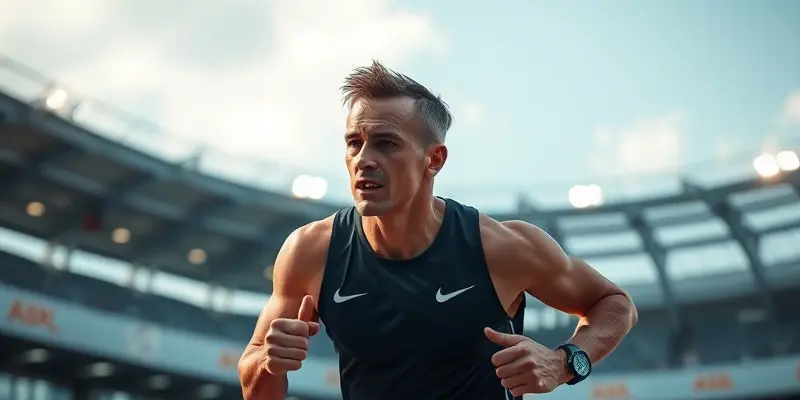Recover Smarter, Not Harder: How Wearable Sleep Trackers Revolutionize Injury Recovery
If you’re a fitness enthusiast or athlete, you’ve probably heard the saying: “You don’t get stronger during workouts; you get stronger during recovery.” For years, recovery was guesswork—ice baths, lots of rest, maybe some foam rolling. But technology is changing the game. Wearable sleep trackers like Oura Ring, WHOOP, and the Apple Watch are making injury prevention and recovery smarter, more effective, and even more motivating. Let’s dig into how these devices can make a real difference for anyone who wants to stay strong, heal faster, and keep pursuing their fitness goals.
Why Recovery and Sleep Matter
We all celebrate hard workouts—but real progress happens between sessions. Good recovery serves as your body’s repair crew, fixing muscles, restoring energy, and even sharpening mental focus. When recovery falters (think: poor sleep, stress, or back-to-back tough training), injury risk skyrockets.
Here’s a practical example: Studies and real-life coaching show that when sleep drops below 7 hours per night, rates of muscle strains, fatigue, and even illnesses rise dramatically. Muscles simply don’t get the deep repair they need without quality sleep.
Sleep is mission-critical for:
- Muscle repair and growth
- Hormonal balance (including growth hormone)
- Mental focus and emotional stability
- Preventing overuse injuries
How Wearable Sleep Trackers Work
Imagine having a personal coach that quietly monitors your body all night, waking you with tips for a better tomorrow. That’s what these wearables do—no lab equipment needed!
The Leading Players
- WHOOP: A strap that delivers a “recovery score” each morning based on heart rate variability (HRV), resting heart rate, and sleep performance.
- Oura Ring: Comfortably slides onto your finger, tracking sleep stages, trends, and readiness, delivering insights for beginners and pros alike.
- Apple Watch: Already on many wrists, it offers solid sleep tracking plus seamless integration with other health metrics.
Key Metrics—Simplified
- Sleep Stages: Light, deep, and REM—the deeper you sleep, the better your body repairs itself.
- Heart Rate Variability (HRV): A high HRV usually means your body is well-recovered and ready for stress or training.
- Recovery Score: A daily number (like a traffic light) that helps you know whether to push harder or dial it back.
These insights turn your nighttime numbers into action plans for injury prevention and performance.
From Data to Results: Prevent Injuries, Heal Faster, and Stay Motivated
Injury Prevention
Wearables highlight patterns that might lead to trouble. For example, if your WHOOP score tanks after three late-night gym sessions, it’s a red flag to modify your routine before injury happens. Many overuse injuries are preceded by several days of poor recovery data—a warning that’s easy to miss without a tracker.
Faster Recovery & Return to Play
Suppose you’re bouncing back from a pulled hamstring. Recovery scores help you understand when your body is truly ready to ramp up again—reducing “false starts” and relapses. I’ve coached athletes who, thanks to daily tracker feedback, returned to play sooner and more confidently because their progress was visible, not just “felt.” For more tips on speeding up the process, check out our injury recovery checklist.
Motivation During Rehab
Progress can feel slow after an injury, but wearable trackers make success visible. Each good night’s sleep gives you a measurable reward—a higher recovery score or positive trend line. That’s powerful motivation for sticking with the program, even on tough days.
Quick Guide: Comparing Sleep Trackers
| Tracker | Best For | Unique Advantage ||————————-|—————————-|—————————————|| WHOOP 4.0 | Hard-training athletes | Deep recovery data & coaching || Oura Ring (Gen 4) | Beginners, general fitness | Discreet, easy, long battery life || Apple Watch Series 10 | Everyday users | Sleep apnea alerts & ecosystem sync || Google Pixel Watch 3 | Android fans | Intuitive UI, solid sleep insights |
Integrating Sleep Data with a Holistic Recovery Plan
It’s not just about the numbers—wearables work best as part of a balanced routine:
- Listen to the Data: If your tracker says you’re under-recovered, adjust your workout or focus on lighter activities that day.
- Nutrition & Hydration: Many trackers let you log meals and water, helping you see connections between nutrition, sleep, and recovery.
- Mobility & Mindfulness: Use alerts or feedback to schedule stretching, foam rolling, or even a short meditation before bed for better sleep quality.
Tips for Beginners:
- Start by just wearing the device and checking your stats each morning.
- Focus on one action item per week, like improving sleep consistency or adding 20 minutes of stretching if recovery scores are low.
- Trust the feedback—over time, you’ll see and feel the results.
Conclusion: Upgrade Your Recovery Routine Today
Wearable sleep trackers are more than gadgets—they’re practical, evidence-based tools that can help anyone, from weekend warriors to seasoned athletes, recover better and avoid injury. They can even make the process fun and rewarding.
My advice as a coach? Try tracking your sleep and recovery for a month. Use the data to make smarter decisions, and notice how your performance, mood, and motivation improve. Your future, injury-free self will thank you.
Ready to recover smarter? Slip on a tracker and join the athletes turning sleep science into fitness success!

